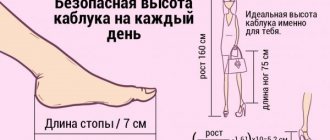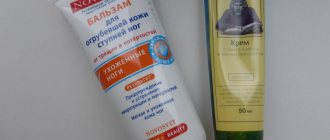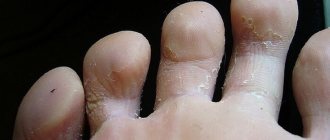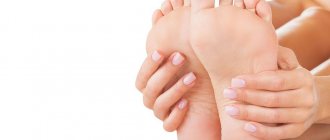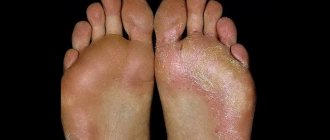Corns are a specific thickening of the surface layer of skin on the feet, often forming during walking. Corns or dry calluses can cause discomfort when moving, and they appear due to frequent mechanical irritation and pressure on the skin of the feet. Repeated rubbing leads to impaired blood circulation in this area and further increases keratinization of the skin.
If you are faced with the problem of corns, do not be upset, since there are many proven ways to deal with this problem. We will look at how to remove corns at home in our article.
You may be interested in: “How to get rid of dark circles under the eyes at home”
Causes of calluses
Before getting rid of corns on your feet and fingers, you need to find out the main reasons for their appearance and eliminate them. Most often, calluses occur due to:
- using uncomfortable, narrow shoes or shoes of the wrong size;
- wearing hard shoes on bare feet or a very thin nylon sock;
- a heel that is too high, which causes compression and excessive stress on the forefoot;
- various foot diseases;
- walking barefoot for a long time;
- excessive sweating of the feet;
- wearing shoes with hard seams inside or with rubbing surfaces;
- wearing socks that are too large and cause wrinkles;
- selection of shoe models with thin soles.
2.Why do corns form?
We can definitely say that the predisposition to the formation of corns varies from person to person. For each person, a whole complex of external and internal factors is important here. We have to come to terms with those of them that we are not able to completely change:
- The structure of the foot, abnormalities in the development of the legs (flat feet, bone growths);
- Features of the skin;
- Distribution of subcutaneous adipose tissue;
- Condition of the vascular system of the legs;
- Metabolism, individual characteristics of metabolism;
- Hormonal background;
- Chronic diseases and anamnesis.
If you notice a tendency to form corns, first of all, you need to pay attention to what could cause increased stress on the feet. A number of such reasons are varied and can be corrected:
- Occupation that involves walking or standing during the day;
- Lifestyle, hobbies and activity (running, dancing, ballet);
- Tendency to obesity, excess weight;
- Low-fat diet, vegetarianism;
- Avitaminosis;
- Tight shoes, predominantly wearing high-heeled shoes;
- Fungal diseases of the feet.
Visit our Dermatology page
How to get rid of calluses on your feet yourself
The easiest way to cure a water callus is to wait for it to burst, or to pierce it yourself. However, it is important to take care of disinfection, otherwise there is a risk of infection.
When deciding how to get rid of dry calluses, you need to take into account the area and depth of the lesion. For example, a small thickening on the little finger can be removed with a pedicure file or pumice stone. You may first need to soften the skin in a hot bath with the addition of various components.
Dry calluses on the foot can also be removed by applying salicylic ointment at night or by sticking a special medicated patch.
However, doctors do not recommend removing calluses yourself, as there is always a risk of damaging the skin and causing infection, which will create additional problems and complicate treatment.
Treatment of corns
When a corn appears, the first step is to eliminate the traumatic factor that contributed to its appearance: give up tight and hard shoes, hard insoles, heels, and switch to looser boots and shoes.
If corns are a result of deformation of the leg bones or flat feet, you should consult an orthopedist. The doctor will give advice on correcting flat feet and help with the selection of special shoes and insoles.
The next step is to eliminate the corn itself. In order for the skin to perform its functions, it is necessary to get rid of the stratum corneum. A keratolytic cream will help remove it. It is applied to the area with keratinized skin, covered with a band-aid and left overnight. In the morning, when the skin softens, the corns are treated with pumice. As a rule, after several procedures the problem disappears.
Callus patches can be used to treat corns. Their surface contains the necessary medicinal components.
Never cut off corns, especially if you have circulatory problems. In some cases, surgical methods are used to remove corns. After the operation, special shoes are selected and physical activity is limited. Such measures reinforce the success of the surgical procedure.
An x-ray examination of the leg will not be superfluous. The image will help check the integrity of the joints of the legs and find out if there are other diseases such as gout or arthritis.
Among the modern methods of treating corns are:
- Keratolytic agents: features, composition
- Plasters for corns
- Special pencils for corns
- Japanese Baby Foot socks
- Hardware pedicure
- Cryodestruction
- Laser therapy
- Pads against corns
How doctors remove calluses
The fastest, safest and most painless method is hardware procedures. Removal of the formation is carried out using a special cosmetology device equipped with an automatic cutter fixation system. This eliminates the risk of soft tissue damage. The procedure itself is painless and does not require special preparation. The session time ranges from 10 to 60 minutes. It depends on the number of dry calluses and the degree of their neglect.
Before starting work and during the procedure, the skin is thoroughly disinfected. In case of increased sensitivity, the patient is given topical anesthesia. When treating calluses and corns, the skin is cooled using a spray.
After removing a callus or corns, the skin is polished, and the edges of the treated area are smoothed so that there is no discomfort when walking later. After completion of the procedure, the treated surface is protected with a bandage.
In this way, you can remove any corns, including dry calluses on your toes or feet.
Features of hardware procedures:
- absolute safety – the surface being treated is thoroughly disinfected, which eliminates the risk of infection;
- speed – unlike home procedures, the removal of corns and calluses in a cosmetology clinic is performed quickly and efficiently. One procedure is enough;
- painlessness – automatic fixation of the cutter on the equipment protects the skin from accidental injury and pain;
- no contraindications – anyone can use hardware callus removal.
Symptoms of corns
At the initial stage of corns development, redness and swelling of the foot appear. Further, it is a gray or yellow area of skin without clear boundaries, has a smooth or rough surface, on which cracks of varying depths are sometimes located. Corns can be either flat or convex in shape. In this area, the sensitivity of the skin to touch is reduced. Painful sensations usually appear while walking. The pain increases when the foot is inflamed or infected, or when deeper cracks form in the foot.
Sometimes corns are associated with enlargement of the big toe and its displacement in relation to the other toes. This puts more stress on the thumb and causes intermittent or constant aching pain.
The result of corns is soft tissue swelling and redness.
Recommendations after removing dry calluses on the feet (toes)
After hardware removal of calluses and corns, it is recommended to wear loose shoes made from natural materials. It is better to give up high heels for 2 weeks, and also not visit swimming pools and saunas for a month. It is better to treat the skin with a disinfectant composition.
Patients who successfully get rid of dry calluses experience lightness in their legs and no pain while walking.
It is better to prevent the occurrence of corns and regularly remove rough skin on the feet. By periodically undergoing a medical hardware pedicure procedure, you will not be aware of such problems as rough skin on your feet and the occurrence of complications.
If you want to remove dry callus, contact the SM-Cosmetology clinic. At the initial consultation, the podologist will conduct an examination and select the optimal method to solve your problem. You can remove calluses and corns after one visit to a cosmetology clinic.
—>
Folk remedies
At home, you can combine pharmaceutical drugs and simple non-traditional recipes.
Local procedures are considered the most effective folk remedies in the treatment of cracks, corns and dry calluses. Each method - baths, compresses, lotions, masks - is based on the use of natural plant ingredients.
The best among them:
- Crassula or money tree;
- potato;
- onion;
- propolis;
- pine resin;
- dandelion;
- ivy;
- celandine;
- sap.
Natural ingredients are used fresh or dried. The raw materials are poured with boiled water and infused for about 20-30 minutes. After filtration, the finished infusions are used in appropriate recipes.
Lotions and compresses for corns
Homemade lotions, which consist of soaked onions in vinegar, are used every evening before going to bed until the problem disappears completely. First, your feet need to be steamed in a warm bath and treated with pumice after the procedure.
Recipe and use of lotion:
- 2-3 medium onions, previously peeled and chopped, are soaked in a glass of 9% table vinegar for 3-4 hours.
- The mixture is applied to problem areas, secured with a medical napkin and a sterile bandage.
- Put on socks and leave for up to 12 hours.
You can finely chop the onion, soak it in milk and lubricate the affected areas.
Propolis or pine resin are also used as compresses:
- Before use, any of the products is heated in a water bath to 37-38 degrees and applied to the affected feet using a silicone spatula.
- The legs are wrapped in cling film or plastic bags.
- Put woolen socks on top. The procedure time is 8-12 hours.
The duration of the course is until the corns disappear. Experts advise using raw eggs and a mixture of raw potatoes and natural honey. You need to keep such compresses for about 20-30 minutes every day for a month.
Foot baths
It is better to carry out restorative baths 2-3 times a day in warm or cool water.
Baths with whey or herbal infusions will help eliminate corns. Herbalists advise not to neglect salt procedures. To do this, dilute 1 tablespoon with a liter of cold water. As a result, pain is reduced, the skin softens and after 1-2 weeks, dry calluses disappear completely. The procedure time is 30 minutes. Instead of salt, you can use soda, sea salt, ammonia.
Pads against corns: proper prevention is the best protection
Coping with a disease at an early stage is easier than when it is already advanced. But it’s even easier to prevent it from appearing. Constant prevention will help avoid the formation of dry calluses. To do this, you need to carefully consider the choice of shoes; women alternate stilettos and heels with ballet flats and moccasins. Apply moisturizer daily and have regular pedicures.
If you have to constantly wear high-heeled shoes, you need to use special silicone pads. They are designed for reusable use. It is recommended to wash the pads frequently with water and sprinkle with talcum powder before use. Their main purpose is to distribute weight evenly, which eases the load on the feet, thus protecting against the appearance of corns. They can be presented in the form of insoles, half-insoles and inserts. These types of pads differ in size. For closed shoes, you can choose insoles or semi-insoles, but inserts are suitable for open women's shoes or sandals. It is also worth considering where on the foot corns most often form. The inserts protect the skin under your toes; for a better effect, you can opt for the insole.
Author of the article:
Kuzmina Vera Valerievna |
Endocrinologist, nutritionist Education: Diploma of the Russian State Medical University named after. N.I. Pirogov, specialty “General Medicine” (2004). Residency at the Moscow State Medical and Dental University, diploma in Endocrinology (2006). Our authors
How to treat corns if they hurt
Even an ordinary callus can cause pain. Until the root cause of the pain is eliminated, all procedures will only bring temporary relief.
Here are some tips on how to temporarily relieve pain:
- cooling the area with a piece of ice, which will help relieve swelling and inflammation;
- application of callus plaster;
- the use of ointments and creams based on salicylic acid exfoliates hard tissue well;
- if the pain is very severe and prevents you from moving, you can apply an anesthetic ointment (for example, Diprospan).
Pedicure socks
Corns on the feet - treatment, quick relief (photos will be posted later in the article) from painful calluses is carried out using convenient home methods - can be eliminated using pedicure socks. They are produced in the form of shoe covers made of transparent film. The active ingredient is lactic acid, and the socks are saturated with it.
The composition may also contain hyaluronic acid, castor oil, and soybean oil. Thanks to all these components, the effect of deep peeling and moisturizing of the skin of the feet is achieved. The process of removing corns with this product is quite long, but the result is comparable to a salon procedure. This procedure must be carried out at home according to the instructions.
The general rules are as follows:
- wash, steam and treat your feet with pumice stone;
- open the socks and pour the solution into them;
- carefully put on pedicure socks and another pair of cotton socks on top;
- keep the specified time;
- rinse off the residue with warm water.
The peeling action continues after rinsing. The process takes 5-7 days. At this time, the feet will not look very aesthetically pleasing, since the old skin will be actively replaced by new ones. Do not tear off the peeling skin so as not to damage the new one. In extreme cases, it can be cut off with nail scissors.
The result after such a deep peeling lasts for 3-4 months, then you can repeat this procedure as necessary.
Calluses and warts
| Removal of complicated warts and deepened calluses (1 unit) | – | 1500 |
| Removal of complicated warts and deep calluses – level II (1 unit) | – | 2000 |
| Removal of complicated warts and deep calluses – Level III (1 unit) | – | 2500 |
| Removal of complicated warts and deep calluses – level IV (1 unit) | – | 3000 |
| Removal of complicated warts and deep calluses – level V (1 unit) | – | 3500 |
| Unloading dressing (1 unit) | – | 500 |
| Treatment with an antiseptic, applying a bandage when removing the problem area (1 unit) | – | 3500 |
| Removal of callus (1 unit) | – | 3500 |
| Treatment for hyperkeratosis (1 unit) | – | 6500 |
| Laser treatment of the problem area - Level I. (1 unit) | – | 2500 |
| Laser treatment of the problem area - Level II. (1 unit) | – | 3500 |
| Hardware processing - Level I. (1 unit) | – | 1500 |
| Hardware processing - Level II. (1 unit) | – | 2500 |
| Hardware processing - Level III. (1 unit) | – | 3500 |
| Hardware processing | – | 6500 |
Creams and ointments
Corns on the feet, treatment, quick relief (photo will be posted below) from them occurs thanks to various creams and ointments, it is recommended to lubricate with such means.
Most Popular:
- Salicylic ointment is prescribed as the main drug. It is effective in treating calluses, warts, corns, soothes inflamed skin, and kills pathogenic bacteria. The active ingredient is salicylic acid, thanks to which corns quickly soften. In addition, the ointment is keratolic, which means it helps exfoliate the skin, making it smooth and restoring its appearance. It cannot be used in infancy, as well as in cases of renal failure and individual intolerance. Side effects are very rare. As a rule, this is mild redness and itching, and a skin rash may appear. If side symptoms are detected, treatment with salicylic ointment should be stopped. Price - 20-30 rubles.
- Chinese callus plaster - red plates on which medicinal ointment is distributed. The active substance is a compound of salicylic acid and phenol. The tandem of these two substances has an antibacterial, anti-inflammatory effect, and also relieves itching. Contraindications to the use of the patch are violation of the integrity of the skin, injury and individual intolerance.
- Verrucacid. Available in dark bottles. The ointment is prohibited for use by children under 7 years of age and in cases where the total area of the affected areas reaches 20 cm2. In an interesting situation, the use of the drug is permitted if the benefit to the mother outweighs the potential risk to the fetus. Side effects such as redness and swelling may occur, but this usually does not require seeing a doctor as it goes away on its own. Price from 200 to 300 rubles.
- Foot balm Balzamed. The composition contains components such as vitamin A, E, provitamin B5 (panthenol), jojoba oil, avocado, urea. Regular use of this ointment helps make the skin more elastic and smooth. The skin on your feet becomes healthy and well-groomed. The price varies between 250-400 rubles.
- Antimozolin cream. The urea and lactic acid in the composition moisturize the skin well and help soften callous tissue. The cream has no contraindications and is recommended for regular use. The price ranges from 80 rubles. up to 150 rub.
- Combined ointment of 3 components: petroleum jelly, salicylic and benzoic acid. It should not be applied if the integrity of the skin is damaged, or if you are sensitive to one of the components.
- Beeswax mixed with lemon juice and propolis. Contraindicated for people allergic to beeswax.
- Vishnevsky ointment. The active ingredients are xeroform and birch tar, excipients are fish oil or castor oil. Xeroform has an antimicrobial, astringent and drying effect. It can be applied to large areas of skin. Moreover, they use it at least 3 times a day. The ointment is applied to gauze or a cotton swab and applied to the callus. Use in childhood, as well as during pregnancy and lactation, is prescribed after consultation with a specialist. With prolonged use of the ointment, undesirable effects such as urticaria, skin swelling, and itching were observed. Approximate price 20-40 rubles.
In the composition of creams and ointments for calluses, you can also find a component such as glycolic acid, which has an antimicrobial and antiseptic effect.
The use of anti-callus creams during pregnancy is not contraindicated, but there are some exceptions.
For example, the use of salicylic ointment is not recommended because salicylic acid is absorbed into the blood. If there is still an urgent need to use this product, then pregnant women are allowed to use no more than 1 g of ointment per day.
